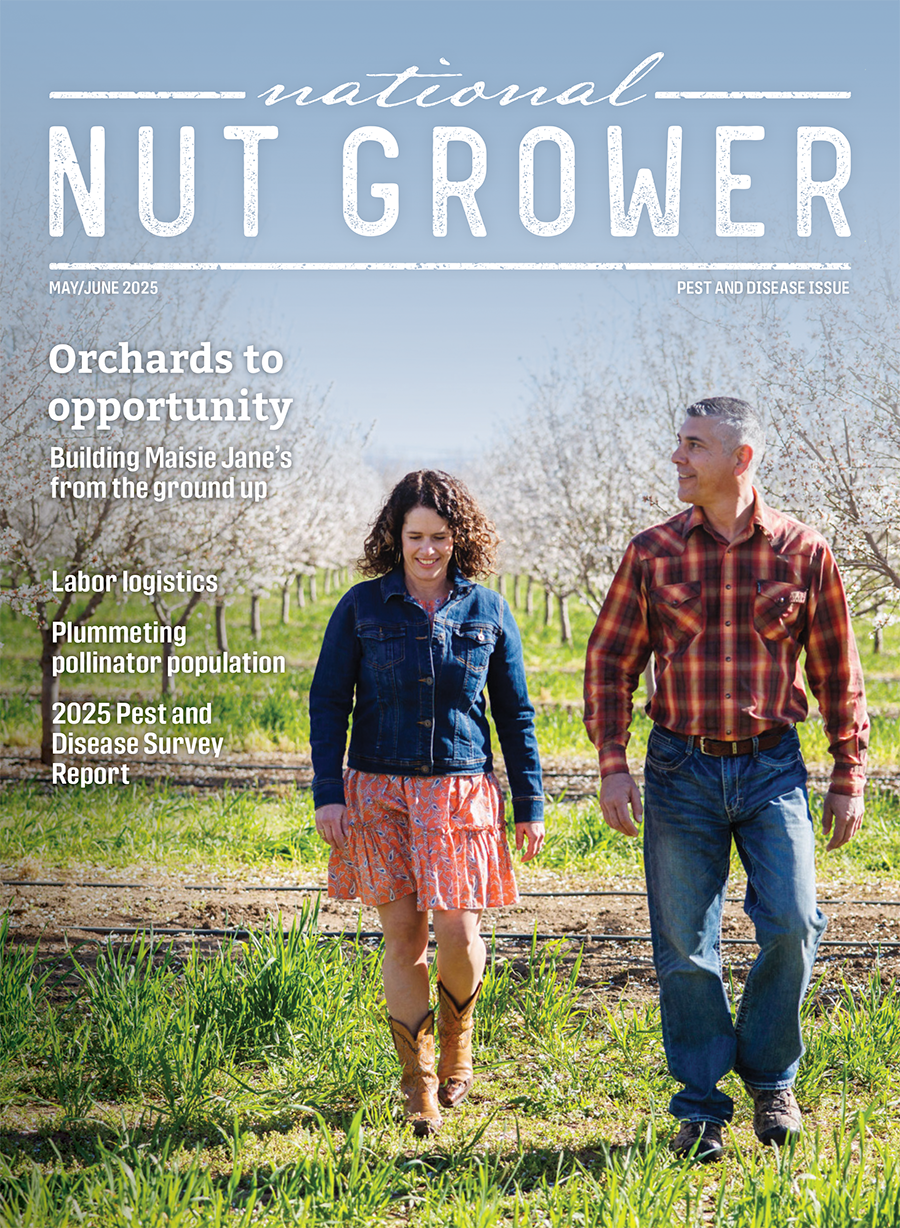Dec 24, 2020UGA to begin new pecan variety trials in southeast Georgia
University of Georgia faculty will begin a series of pecan trials this winter to help identify better management practices for growers.
New pecan trees will be planted at UGA College of Agricultural and Environmental Sciences Vidalia Onion and Vegetable Research Center in Toombs County for research and demonstration purposes. Andrew Sawyer, southeast Georgia area pecan agent for UGA Cooperative Extension, is spearheading several research projects with a team of UGA researchers looking at factors that impact the pecan industry such as variety selection, insect pest management, disease resistance, herbicide application rates and other input requirements. This research is funded by a Pecan Commodity Commission grant that was awarded last year.
Sawyer, who began this new position in May 2019, is based in Statesboro and supports pecan growers throughout southeast Georgia. The position is funded by the Georgia Pecan Growers Association and UGA Extension to support Extension pecan specialist Lenny Wells at the UGA Tifton campus.
The team will primarily study the effects of pecan scab fungus on various cultivars that grow well in the southeast. Pecan scab begins in the tissues of the tree trunk, and at bud break in the spring, the disease begins to rapidly spread through the limbs, leaves and eventually the nuts. It’s the most detrimental disease to pecans in Georgia, causing severe economic losses each year. Currently, trees must be treated with several applications of fungicides annually in order to produce a marketable crop, as it only takes 25% scab on shucks to minimize quality.
‘Desirable’, ‘Pawnee’ and ‘Stuart’ are some of the most common pecan varieties grown in Georgia, valued for their excellent yield and nut quality. Of the three cultivars, growers have shown a preference for ‘Desirable’, which has now become the most susceptible variety to pecan scab.
“The most susceptible cultivars to this disease also happen to be the industry standards used here in the southeast,” explained Sawyer. “We didn’t use to see pecan scab in these cultivars, but over time, as the pecan industry became more or less a monoculture of ‘Desirable’, the disease has gained a foothold in orchards throughout the state. We are at a point that we shouldn’t be planting this cultivar in new orchards anymore. There may be some situations where growers are located in more northern areas of the state where this disease isn’t as hard-hitting, but most pecans are grown in warmer parts of the state where spraying from bud break to shell hardening requires an unsustainable amount of labor and money.”
Sawyer hopes that through his research program, other low-input, marketable varieties will prove to be just as valuable as the current industry favorites. His recommendation for growers who are interested in establishing new orchards is to use a variety of cultivars to help minimize the risk of disease and pest issues.
“Since 2008, UGA researchers in Tifton have been working with alternative cultivars that are resistant to pecan scab, have low input requirements, are high yielding and produce great quality nuts. Some of the best varieties we’ve seen are ‘Excel’, ‘Lakota’, ‘Gafford’, ‘McMillan’ and ‘Kanza’ – a cold-tolerant variety that may be better suited for growers in north Georgia as well,” said Sawyer.
Low-input cultivars provide an economic benefit to growers, especially in southeast Georgia, because orchards in this region tend to be managed through commercial practices, but on a much smaller scale than found elsewhere in the state.
“When you have a smaller operation, but still have to shell out a lot of time and money into your crop, the cost-benefit ratio sometimes doesn’t work to your advantage,” said Sawyer. “That’s why these low-input cultivars are so attractive, it means growers can save more time and money and end up with a great quality, high-yielding product without all the heavy investments. So, the Vidalia Onion Research Farm will be a great location in this part of the state to observe these low-input cultivars,” he added.
As research plots are established this winter, trees will be planted in such a way to accomplish both long-term variety research and short-term applied research goals. Sawyer and his team will be hosting several demonstrations at the research farm over the next few years to allow Extension agents and growers to participate in hands-on training about topics including planting, pruning, grafting, irrigation, pest and disease prevention strategies, and making herbicide treatments using different chemistries and rotations.
To learn more about pecan varieties and management, see UGA Extension Circular 898, “Pecan Varieties for Georgia Orchards,” and UGA Extension Circular 1174, “Pecan Management,” both available at extension.uga.edu/publications. To keep up with the latest information from the UGA pecan team, visit pecans.uga.edu.









